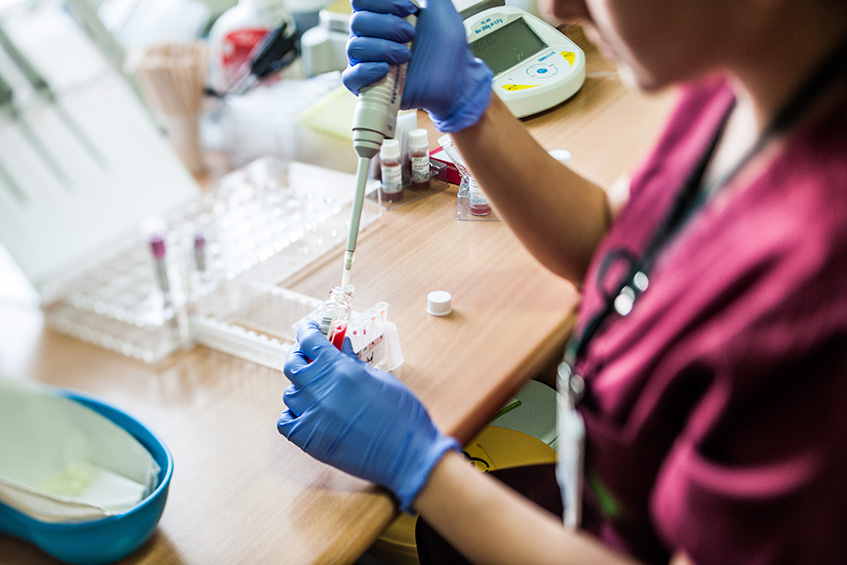
Basically, the main goal of any blood bank is to provide safe blood products to patients. Here, in Albert Haykel Hospital, we are very concerned about patient safety thus the process of safety starts from the beginning with the donor. Donor selection is of extreme importance. Donors are accepted if they pass all test levels before the process of blood collection: a questionnaire, a physical exam, blood tests to exclude anemia and infection, and hepatitis history. Extensive cleansing and disinfection of the donor arm at the site of phlebotomy is very important too, to prevent skin flora from infecting blood. Further tests are done on blood to ensure safety of the products. All work is controlled by quality control sera.
Components are extracted from all donor blood: filtered phenotyped red cells and fresh frozen plasma. Platelets are collected by apheresis. Two apheresis machines are available for this purpose. Some donors with high hemoglobin level can collect double red blood cell units by apheresis technique.
To enhance transfusion safety we provide phenotyped red cells to almost all patients, thus preventing transfusion reactions at the time of transfusion and later on, preventing developing allo-antibodies.
Blood group determination is performed in two different techniques by two different technicians. Results are reported separately and the hospital information system compares the results for compatibility. Otherwise both results are rejected and the test is repeated.
Immunohematology tests for detection and identification of antibodies are also part of our routine work.
To promote safety, all blood bank activities are controlled by an information system connected to the general hospital information system:
- All clerical errors are thus avoided
- The donor’s history is registered and saved for future review.
- Patient blood tests, controlled by two technicians in two different ways are checked for compatibility in the system as mentioned previously.
- No transfusion is ever performed without bed-side control of patient and unit blood group on a special card saved in the patient file. If any discrepancy is suspected, transfusion will not start before solving it.
- Two or three registered nurses at least one is a control nurse check all transfusion activities, and both sign to ensure full control.
- And as stated before all activities are recorded in the software and in patient file
- Doctors and blood bank staff are reported of any reaction to transfusion – if it happens.
- Transfusion execution sheets are sent to the blood bank for another control and comparison to that information on the system, and sheets are retained in a special file.
- Patient follow-up tests are controlled in the following visit by irregular antibody testing. If present, the patient is informed about the type of antibody present if future transfusions are expected.
The department is managed by a group of professionals headed by a director, a senior technologist, and experienced technologists. Blood is assured to patients 24/7 and collection from 7AM-7PM except in states of emergency.
A blood transfusion committee, whose members represent the blood bank department, the nursing staff, the hematologists, the anesthesiologists, and the surgeons, meets on a regular basis to discuss all activities, solve problems if they exist and improve performance.
PLASMAPHERESIS
“Pheresis” comes from a Greek word meaning removal or taking away. So plasmapheresis is a procedure in which plasma is removed from a patient through a catheter (or a good vein) and replaced by donors’ plasma (or fluids like albumin or hydroxy-ethyl starch) to treat a variety of disorders.
A separator called apheresis machine is used for this procedure. Thus it is an extracorporeal therapy.
The first procedure was performed in 1959 in “Old Cedars of Lebanon Hospital” in Los Angeles by Michael Rubinstein to treat an adolescent with a Thrombotic Thrombocytopenic Purpura (TTP).
Disorders, mainly autoimmune, are treated with plasmapheresis e.g. Goodpasture’s syndrome, Myasthenia Gravis, Guillain- Barré, TTP, lupus, Graft rejection cases and many more.

